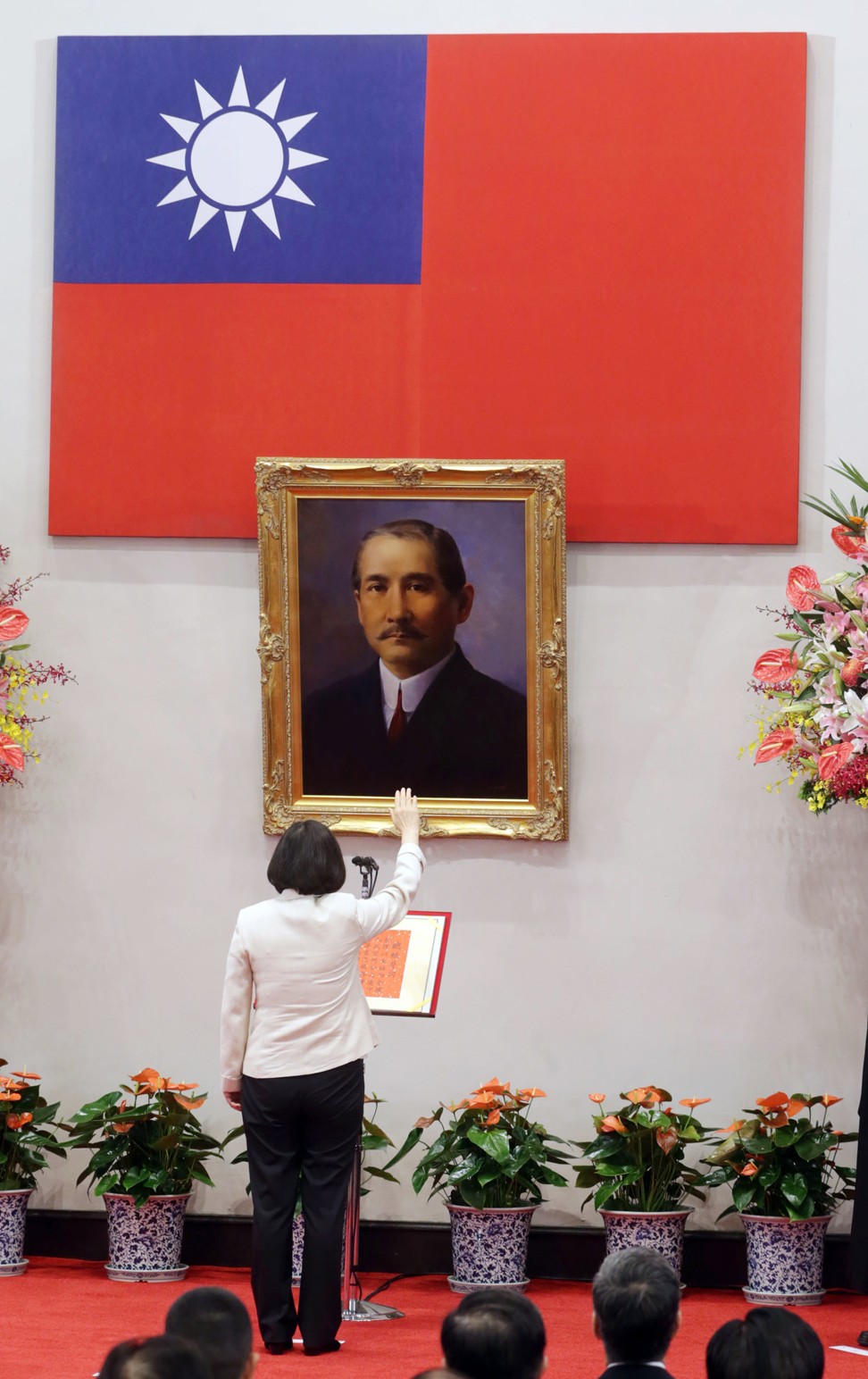
Taiwan’s Tsai Ing-wen has torn up the 1992 one-China consensus. What does Xi Jinping do next?
- Tian Feilong says the 1992 consensus reached by China and Taiwan has always been a weak agreement. The mainland needs to strengthen it, win the Taiwanese public’s consent and design a ‘one country, two systems’ framework specific to Taiwan
The mainland’s push to expand cross-strait relations from the 1992 consensus to “one country, two systems” has received pushback from Taiwan. More than ever, we need a complete understanding of the complex connotations of the 1992 consensus, and its relationship with “one country, two systems”.
Meanwhile, the DPP has emphasised Taiwanese localisation and is looking to stay in power, to take advantage of a window of opportunity to declare independence. Externally, China’s trade war with the United States is in full swing, touching off a power struggle in the global order, and Taiwan is a valuable card to play.
After 1992, and especially during the Ma Ying-jeou administration, the two sides put forward proposals for agreements on cross-strait peace, military confidence-building and more substantive issues, but shelved them because of all kinds of difficulties. Today, Beijing is even less likely to achieve a breakthrough in cross-strait relations on the basis of the 1992 consensus.

The core meaning of the concept is: the two sides of the Taiwan Strait belong to “one China”, but they can interpret the legal form of, and govern, “one China” differently. The consensus implies a vague acceptance of a dilemma: in the same territorial space, there are effectively two governments.
The 1992 consensus is wisely ambiguous, and allows for delayed decisions.
However, since the 1980s, localism and radical democratisation have taken shape in Taiwan. Such groups, voted into power, have neither historical sympathy for, nor identify with, the “one China” that is the basis of the 1992 consensus. Taiwan’s independence movement is also future-oriented, but its goals are secession and self-determination.
The 1992 consensus actually includes three progressive levels. At the lowest level, there is the intentional consensus between the KMT and the Communist Party. This is the original meaning of the concept, which mainly includes the two parties’ overlapping consensus on understanding cross-strait relations.
At the middle level would be a political consensus marked by a peace treaty between the governments of the two sides. This would be an institutional breakthrough. A peace treaty means that the two sides would declare an end to the civil war. This would lay the foundation for constitutional reunification.
In its constitution, in its Anti-Secession Law and at the 19th National Congress, China has underlined its intentions of unification. But the DPP administration cannot possibly accept such unilateral declarations, and there is a lack of practical conditions for the Taiwanese public’s constitutional consent to reunification.
This is evident from the response to Xi’s speech from various circles in Taiwan. However, public opinion can be transformed by concrete political wisdom and creativity.
Beijing’s wait for the DPP’s “test answer” presupposed the consensus it built with the KMT. But it was too idealistic to expect the DPP to be like the KMT. Consider the DPP’s performance in the past two years, and Tsai’s eager rejection of Xi’s proposal.
Beijing must discard its fantasy and prepare for a struggle. On the basis of the 1992 consensus, it must build a clear consensus on unification.
With such a constitutional consensus and the package of equal rights, it could smooth a practical path to unification, and seriously consider a “one country, two systems” framework specific to Taiwan. Xi’s speech has greatly accelerated this process.
Tian Feilong is an associate professor at Beihang University’s Law School in Beijing. This article is translated from Chinese


